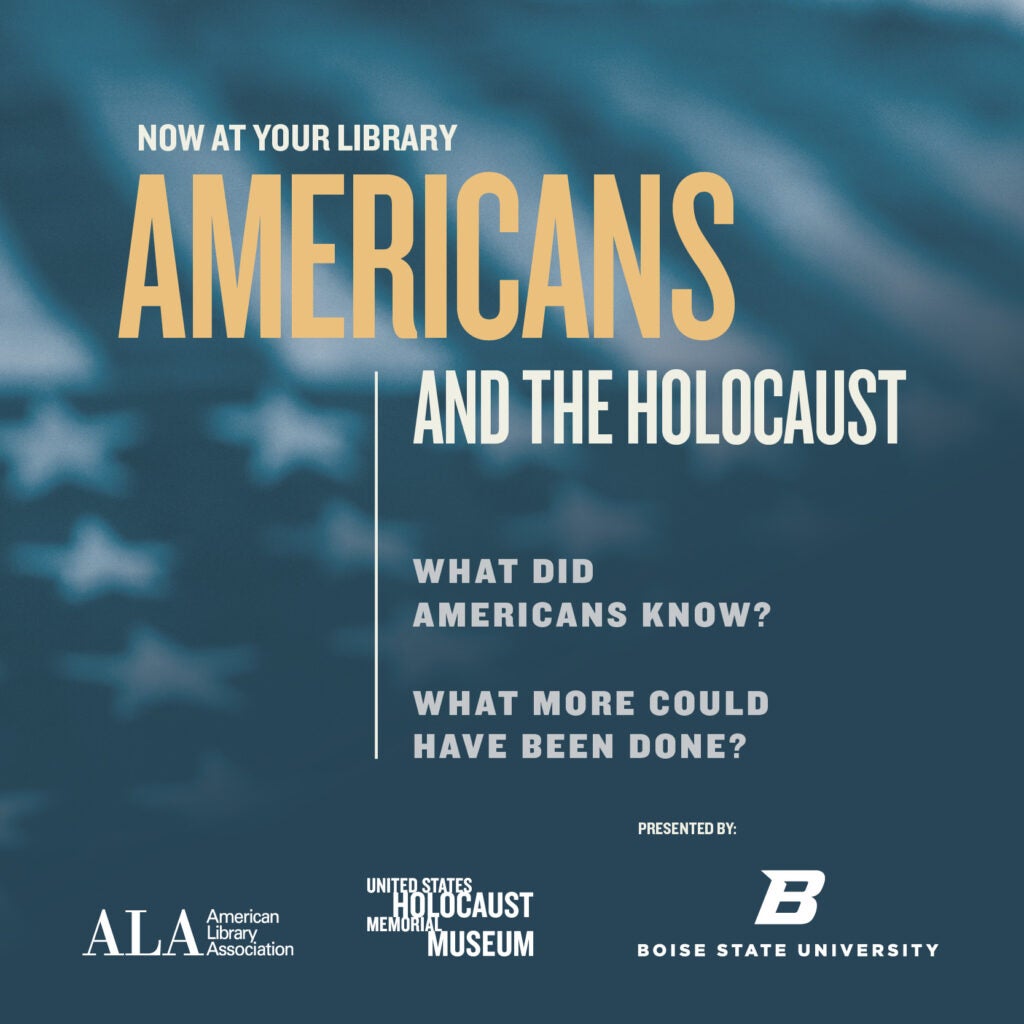
From March 22 – April 26, Albertsons Library welcomes visitors to Americans and the Holocaust, a nationally touring exhibition from the United States Holocaust Memorial Museum.
Exhibition Overview
Holocaust history raises important questions about what Europeans could have done to stop the rise of Nazism in Germany and its assault on Europe’s Jews. Questions also must be asked of the international community, including the United States.
The exhibition raises challenging and important questions about this critical moment in American history: What did Americans know? What more could have been done?
Americans and the Holocaust examines the motives, pressures, and fears that shaped Americans’ responses to Nazism, war, and genocide.
Video: Now at Your Library: American’s and the Holocaust
Video has closed captions and a video transcript is provided on this page.
Americans and the Holocaust: A Traveling Exhibition for Libraries is an educational initiative of the United States Holocaust Memorial Museum and the American Library Association. The exhibit is made possible by the generous support of lead sponsors Jeannie & Jonathan Lavine. Additional major funding was provided by the Bildners — Joan & Allen z”l, Elisa Spungen & Rob, Nancy & Jim; and Jane and Daniel Och. The Museum’s exhibitions are also supported by the Lester Robbins and Sheila Johnson Robbins Traveling and Special Exhibitions Fund, established in 1990.
This exhibition includes graphic content that may not be suitable for all audiences.
Video Transcript
People are shocked to find out how early Americans learned about what the Nazis called “The Final Solution” and what they did about it. America has its own prejudices. Antisemitism. Racism and segregation. Political fears, fear of communism. As the Nazis are expanding, our doors are closing even more. What would you do? Would you be willing to take the risk to go to Europe and aid refugees? There was a Nazi threat that most Americans understood as a threat to democracy and they went to war to defeat it militarily but never to rescue the victims of Nazism. The special exhibitions that we’ve done have really focused on victims and perpetrators. This one is different. This is about Americans. What did Americans know? When did they know it? What were the range of American responses to the threat of Nazism?
